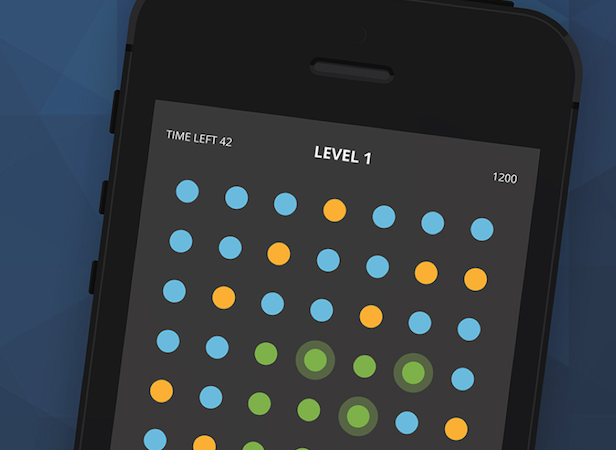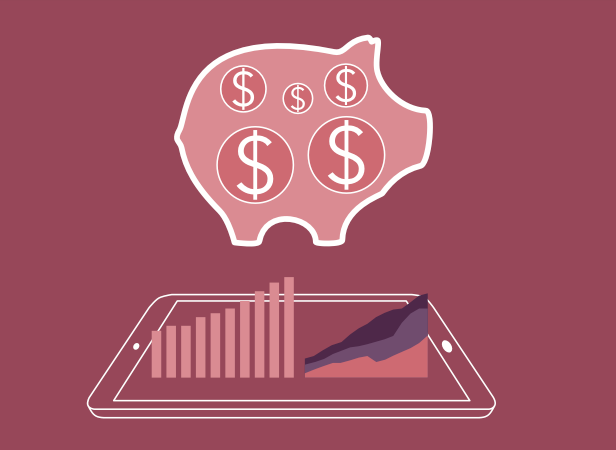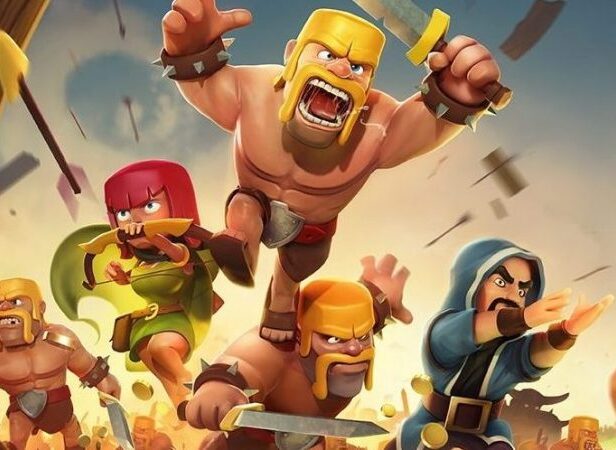Category
Ads & Monetization
#Ads & Monetization
Are Loot Boxes The Future Of Mobile Game Monetization?
In November 2017, EA released Star Wars Battlefront II, developed by DICE studio. The company was met with extreme criticism after it seemed to have not learned from its mistakes with its season pass approach in the first instalment. Famously, EA’s response to that criticism led to the most downvoted comment in Reddit’s history. The reason EA’s response garnered so much negative attention was that it ignored the growing discontent over its use of loot boxes, an increasingly common monetisation strategy in the gaming industry. Though the strategy has been around for over a decade, the success of Blizzard’s Overwatch was a pivotal moment for the loot box model, vastly increasing its visibility and popularity. It has only been in the past few years that the public dialogue has broadened to include parallels to gambling, and whether or not there...
#Ads & Monetization
No Mobile Ad Blindness: Making Sure Users Actually Open Their Eyes And See Your Ads
Ads are a part of daily life for pretty much everyone, and in most cases, we’re probably all pretty good at tuning them out. Whether it’s a TV commercial, a billboard, a banner ad on a website, or a pre-roll message on a video or podcast, the various ads that we’re bombarded with probably barely register for most of us, eventually causing ad blindness. While ad blindness might be a good thing in your personal life (who wants to view advertising on purpose, really?), it’s definitely not a good thing for game developers who rely on clicks and perhaps affiliate marketing as well. With that in mind, how do you optimize your ads for actual productive views and engagements, while keeping mobile ad blindness to a minimum? What Is Mobile Ad Blindness? Let’s start with understanding what ad blindness actually...
#Ads & Monetization
9 Metrics You Should Prioritise For Maximum Revenue
With any analytics dashboard, you’re going to get a lot of information, possibly more than you know what to do with. While all of it is valuable in its own way, you’re probably not going to be parsing every detail of each metric or stat on a daily basis, so you need to be aware of the stats that you should prioritise in order to maximise your game’s revenue – and maintain your own sanity! There are some metrics that you should know by heart, but for some they could prove to be a bit much to take a deep dive into on a daily basis. So without further adieu, these are the metrics you should prioritise if, like most game developers, you want to boost your game’s earning and revenue potential. 1 – Daily Active Users/DAU For your game...
#Ads & Monetization
Microtransactions In Games: The Good, The Bad, And The Ugly
Microtransactions (or MTXs for short) are small purchases players make to unlock further gameplay, gain extra lives, change a character’s appearance, or speed up the gaming process in simulation games like The Tribez. The microtransaction business model has a strong right to exist on mobile; in a world where a Match-3 game costs up to $200,000 to develop and promote, even when they are often distributed for free, game studios are bound to find ways to make money from their hard work somehow. At the moment, over 90% of all mobile games use the freemium model; the apps are free to play (F2P) and incorporate various in-app purchases (IAPs). Although only 1.9% of players actually spend money on in-game content, they bring up to 90% of the total mobile game market revenue, which hit $46.1 billion in 2017. Last year...
#Ads & Monetization
5 Effective Behavioural Economic Monetization Patterns
Behavioural Economics is a fascinating offshoot of economics, which explores psychology of decision making process of customers. Over the years I have been testing and reviewing numerous mobile games and apps in different genres. While I enjoy deconstructing and analysing different aspects of the digital products, on-boarding, core loop, social, meta, PvP etc. Monetisation patterns employed are of special interest to me due to my background in economics. [bctt tweet=”5 incredibly effective monetization strategies in game design (and the behavioural economics behind them)” username=”GameAnalytics”] Here are five unconventional monetisation patterns that differ from the crowd but work incredibly well, each based on a sound behavioural economics principle. But before we dive into what these patterns are, let’s understand the underlying Behavioural Economics Principles and how they apply to these unconventional patterns. What is ‘Behavioural Economics’? The study of psychology relating...
#Ads & Monetization
9 Popular Mobile Game Ad Formats (And How To Use Them)
Editor’s note: We wanted to give you the heads up that our Ads Dashboard is now live! Make the most of your in-game ads by seeing your data in our new dashboard. Improve your ads performance by answering the big questions. Advertising is part of nearly every mobile experience, and whether or not you personally approve of it, it’s becoming standard for most mobile games. After all, it’s a billion-dollar industry. And if you’re going to do it, you should do it well. Ads should be well-placed, high quality, and in just the right amounts in order to make sure your users and your finances are both pleased. Let’s start by going through some general categories of games along with the types of ads commonly used in mobile games, and then we’ll cover the guidelines or thought process that should...
#Ads & Monetization
How to Budget your Mobile Indie Game
It’s hard to estimate the amount of work required to produce a game from start to finish. We know it can be costly. It turns out there’s not a lot of information on the topic out there, thus it’s hard to schedule a project right. That’s why we asked independent studios to share some advice to help you budget your next indie mobile game. Larger companies have dedicated project managers or producers to take care of that. Hence, we’re going to focus on indie studios. How to get a mobile game budget right: the basics In short, there are only so many steps you must tackle to budget your game right: Plan your fixed costs (office rent, supplies, hardware, software licenses, legal support, accounting…) List all the tasks required to ship the finished product Break down the tasks into small,...
#Ads & Monetization
How To Make Your Game UI Shine & Increase Conversions
Why game UI matters Maybe you want to help the players find their way through the menus. You may also want to increase your sales. Regardless of your goal, you can achieve it all by using the principles of design the right way and measuring the impact of your changes. We want people to find their way around the game, to even focus on the game. To make this a reality, we should remove friction in the interface. We don’t want the player to waste time in the menus. We want them to get the information they need through the interface. No more, no less. Unlike the gameplay, you pretty much always want to simplify navigation as much as you can. This has nothing to do with the game’s difficulty or “casual” gaming. In mobile titles, the interface does not only allow...
#Ads & Monetization
Rewarded Video: Retention Impact in Match-3 Games
Editor’s note: the following article is a guest post from Yaniv Nizan, co-founder and CEO of Monetization Measurement Platform, Soomla. The original report is available to download here: video ads retention study in mobile games (PDF). The Purpose of this Study Rewarded video ads can have a positive or negative impact on retention – depending who you ask. This is an unbiased 3rd party study to answer this question for Match-3 games. Test Setup – Data Collection and User Selection to Groups This study aggregates data from 6 Match-3 mobile games. All the data in this test was collected by the SOOMLA TRACEBACK platform coming mainly from: Client side SDK installed in the tested games Ad-network reporting APIs – mainly used as a source of data validation The selection of users to groups was done differently in each test: Test 1 – refers...
#Ads & Monetization
10 Monetization Tips for Mobile Games in 2017
Speak to anyone in the mobile gaming industry and the topic of conversation will always turn to one thing: monetization. Who can blame them? Statista predict that mobile games will generate $40.6 billion in revenue by the end of 2017. That’s more than double Facebook’s 2015 revenue. Not a number to sneer at. Perhaps more noteworthy is that – as of January 2016 – this revenue was generated by less than 1.9% of the overall player base, showing a 0.4% increase from the same study in 2014, according to a report by the mobile marketing automation platform, Swrve. Mobile gamers are spending more Their study aggregates data from over 10 million purchasing players – from the minnows, to the dolphins, and the whales. Interestingly, at just 0.19% of the demographic the “whales” account for a whopping 48% of the total revenue....
#Ads & Monetization
How to Identify Whales In Your Game
Monetization has been a hot topic in the games industry over the past years, ever since the rise of free to play games. How to optimize monetization, how to define correct pricing buckets or how to better convert players are just a few of the widely discussed questions concerning the topic. In this article, however, we’ll be approaching monetization from a different angle. Rather than discussing how to achieve a high conversion rate, we will dig into the differences in behaviour between converted players and non-monetizers. With this we’re looking to give you some insights into these players’ profiles, based on which you should be able to identify them early in the game. We will be working with two main categories (non-monetizers and monetizers), but 4 cohorts. For granularity purposes, we have broken down the monetizers category into 3 types:...
#Ads & Monetization
Cracking the IAP Code: The F2P secret devs don’t want to talk about
Welcome to the magical world of mobile, where the clever boys and girls at the world’s most creative, ingenious studios have fathomed a way to make millions of dollars from games they don’t even charge a penny for consumers to download. The industry has been revolutionised, all of its problems have been solved, and Apple’s gated community ensures every developer gets an equal share of the ever-expanding pie. Or perhaps not. It’s been especially easy for the mobile press to get wrapped up in the huge successes the industry has fostered since the App Store first launched in 2008, with the rise of free-to-play a couple of years later ensuring companies few people had heard of quickly become household names. That’s been the irony that’s not been lost on many of the developers attempting to earn a living on iOS....
#Ads & Monetization
Why there’s no shame in indies making money
There was a telling moment in the UK games development scene recently. A couple of years ago, the British Government lifted the lid on Games Tax Relief – a system designed to allow developers to claim back some game production costs, providing the game in question was identified as “culturally British”. After the initial rush of enthusiasm and jubilation, developers then – in a typically British manner – started to get suspicious. Was this a cynical ploy to get more bright red post boxes, Beefeaters and British bulldogs in games? How could anyone deem whether a game was culturally British or not? How would you go about claiming? Would the amount of money you’d be able to access be worth all the perceived effort it would take to get it? Was it all just a big trick? Of course, as...












